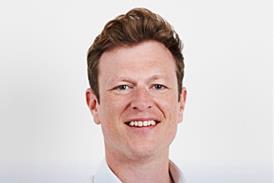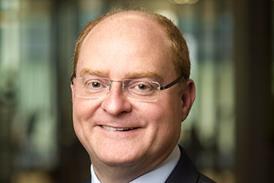The case for reconfiguration of disparate services for children is a strong one, argues Hilary Cass
The Royal College of Paediatrics and Child Health has spoken strongly of the need for urgent reconfiguration of health services − a tough line that has not always been popular with all healthcare professionals.
There are clear reasons for us taking this bold standpoint. The way that children’s hospital services are currently arranged means there is a grave danger of not providing children with the highest possible standard of healthcare.
‘Opponents of reconfiguration often cite it as a dressed up cost-saving exercise’
Children’s health services are fragmented. There are a large number of small units providing general care and specialist services are spread across too many sites.
The knock-on effect is that resources are spread too thinly. Too many hospitals are operating with dangerously low levels of staff. We simply cannot afford to keep the status quo.
Drivers for change
As the King’s Fund pointed out in its report last year, there are four key drivers to reconfiguration: workforce, quality (including patient safety), cost and access.
From a workforce perspective, there have been reports of planned ward closures due to staffing pressures and the need to comply with the working time directive. Providing a 24-hour paediatric service is becoming increasingly difficult.
In an RCPCH report published last year, we calculated a potential shortfall of 600 doctors in paediatric units, meaning some units will inevitably have to close, or risk being deemed unsafe.
This leads to the most important “driver” for reconfiguration: quality and patient safety. Part of the argument for reconfiguration to improve the quality of services is based on logic. The other is based on hard evidence. Take the case of children’s heart surgery, an area in the spotlight recently due to the Safe and Sustainable Review.
It is much safer to have a child operated on by a surgeon who conducts such procedures on a daily basis than one who operates less frequently. Similarly, being in a centre where there are several specialists helps with knowledge sharing and therefore improves the quality of care.
Myths of reconfiguration
There is considerable evidence to support the idea that specialist clinical services, such as stroke, trauma and heart surgery, should be delivered in fewer centres. The recent reconfiguration of stroke services in London to eight specialist centres is estimated to save 400 stroke deaths a year.
‘Stumbling blocks, barriers, reviews, reviews into the reviews, they all delay the process further’
It is important to ensure healthcare is as accessible as possible and with some small paediatric units closing or merging to create larger more specialised centres, some parents are having to travel further to get their child to hospital. But if it means your child is assessed and treated quickly by specialist doctors with access to the latest equipment, then it’s an easy decision to make.
It’s one of the myths of reconfiguration that children would have to travel considerably longer for their day-to-day care. Ongoing healthcare would, in the vast majority of cases, still be provided locally, with only specialist procedures taking place in specialist centres.
Opponents of reconfiguration often cite it as a dressed-up cost-saving exercise. In fact, there is scant evidence that immediate cost savings can be made from reconfiguration.
Quite often where specialist centres are being created or expanded, there is inevitable capital expenditure. However, reconfiguration is much more likely to improve patient safety and the quality of care without costing vast amounts of additional money.
Difficult conversations
Reconfiguration needs to take place urgently. But despite the wealth of evidence and the strong case for change, it remains one of those difficult conversations that we have with politicians, the public, health planners and the medical profession. There are stumbling blocks, barriers, reviews of services, reviews into the reviews − all of which delay the process further.
Proponents of reconfiguration call for better communication with the public about its benefits and the drivers, and the “de-politicisation” of the process to prevent short-sighted approaches by local politicians to gain political capital.
We have to be innovative to meet the very real challenges the health service is facing. For example, Guys and St Thomas’ Foundation Trust is currently piloting a scheme based on “children’s health centres”.
This means creating centres in the community, whether in Sure Start health centres, academies, or existing child development centres, which act as child health hubs and centralise healthcare for children. This kind of reconfiguration is just one of the ways that we can begin to overcome the workforce and quality challenges we face.
So let’s have those difficult conversations and debate the issues of reconfiguration openly. Let’s also not shy away from innovation.
Hilary Cass is president of the Royal College of Paediatrics and Child Health and a consultant in paediatric disability at Guy’s and St Thomas’ Foundation Trust



























No comments yet